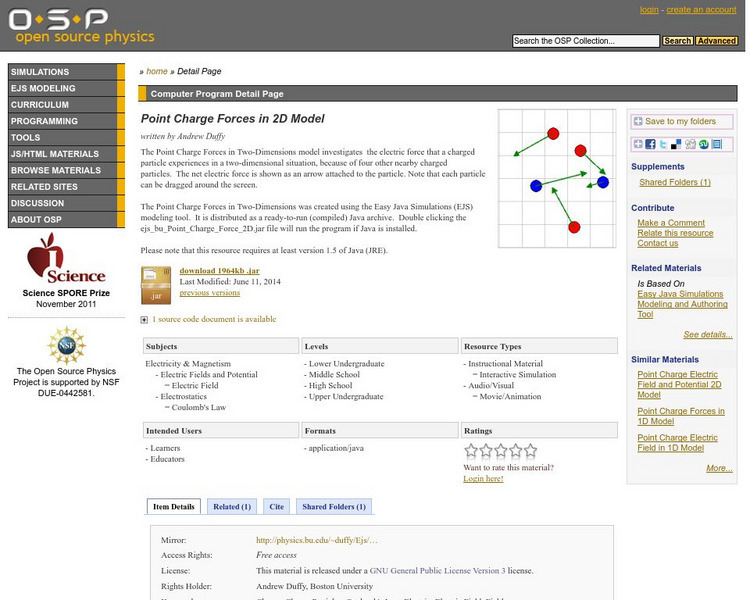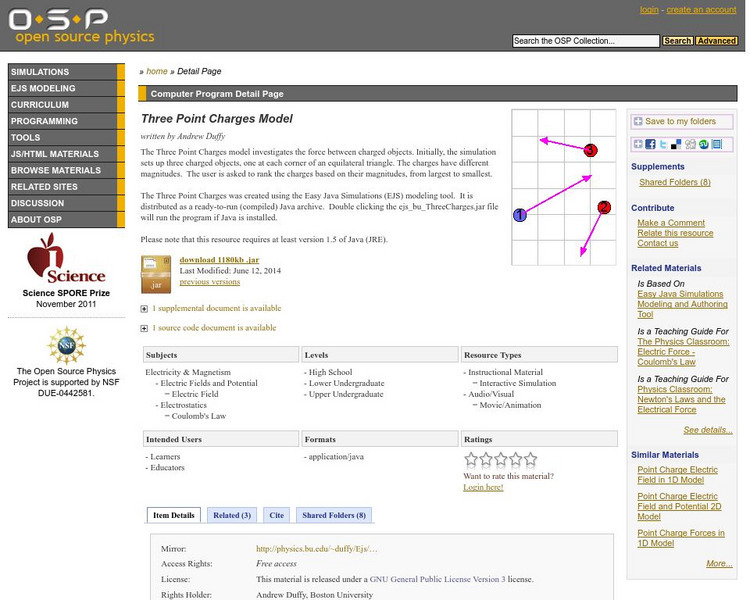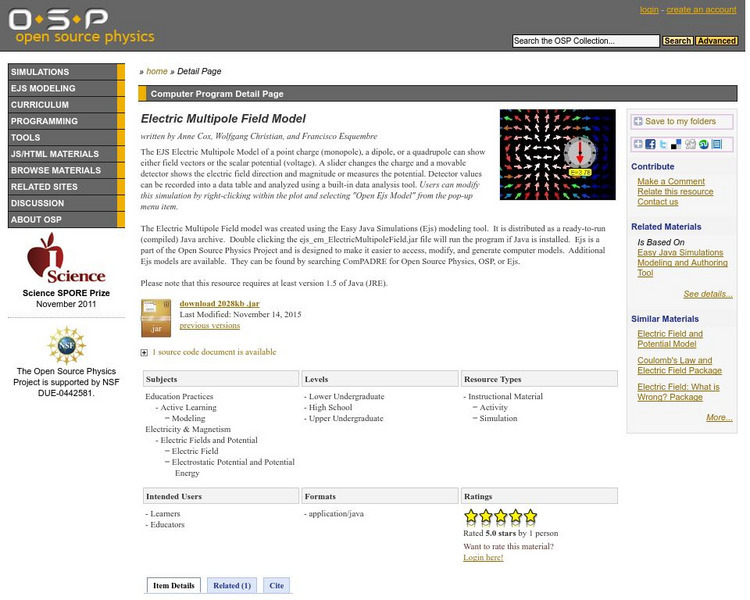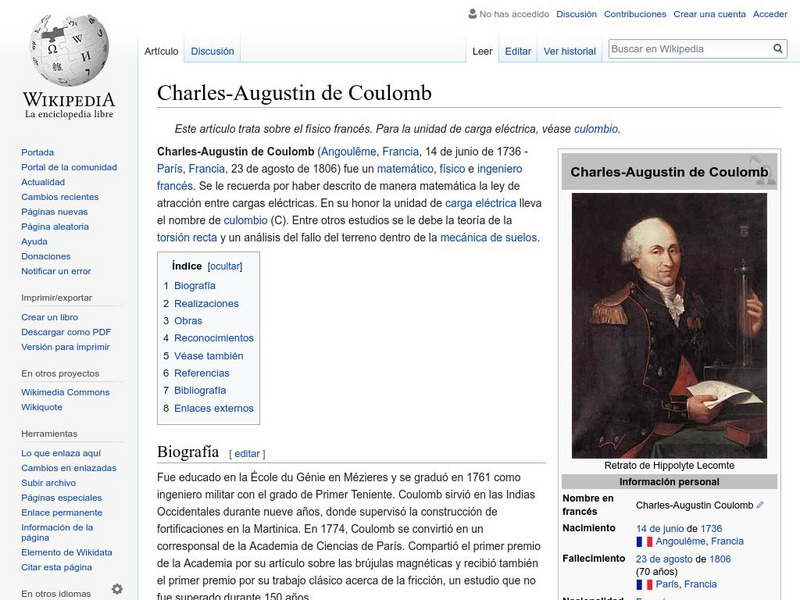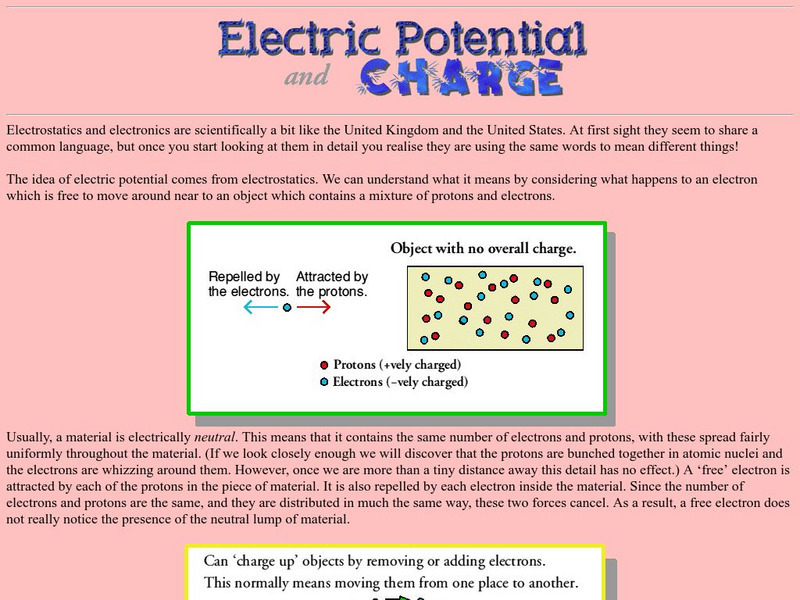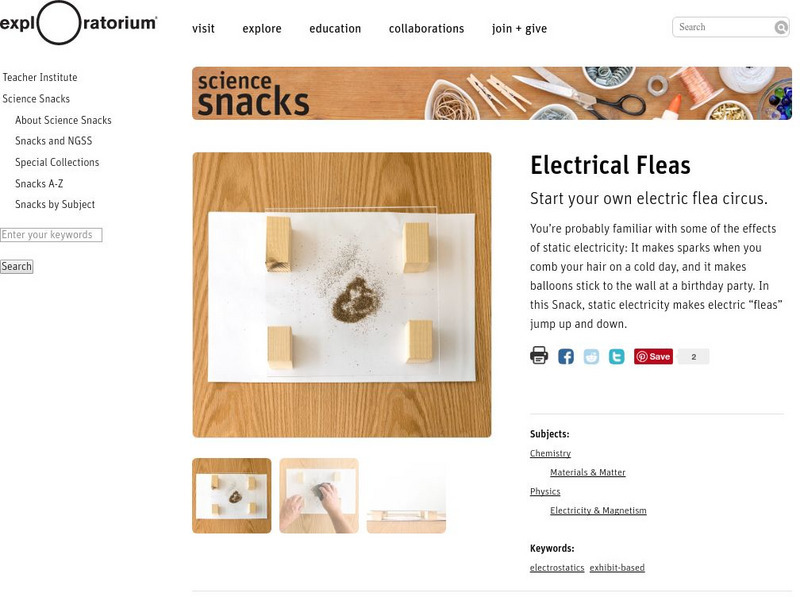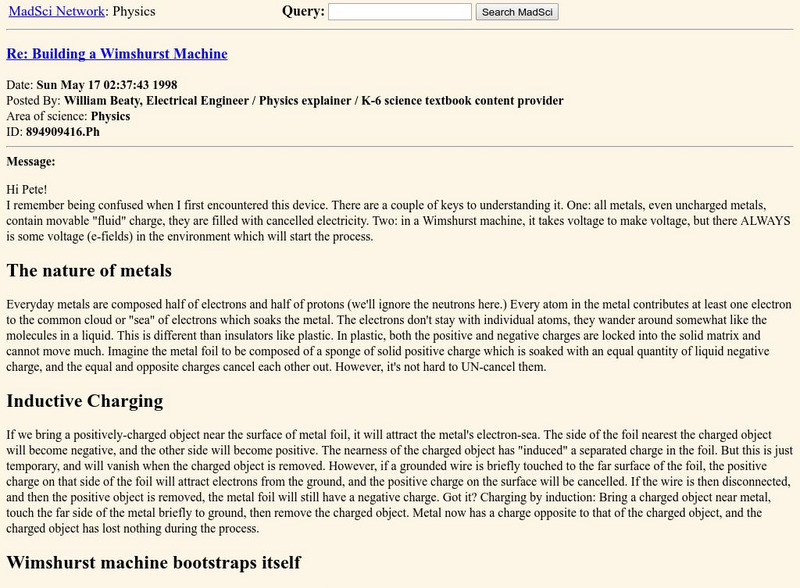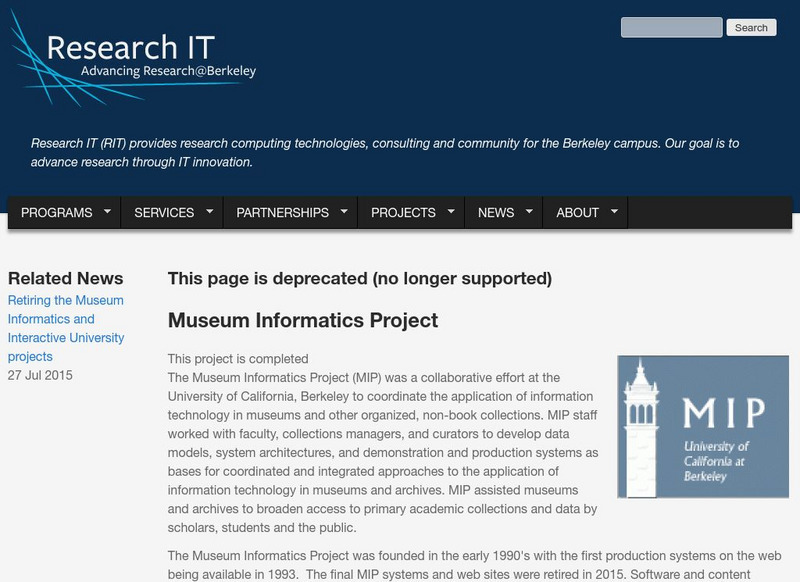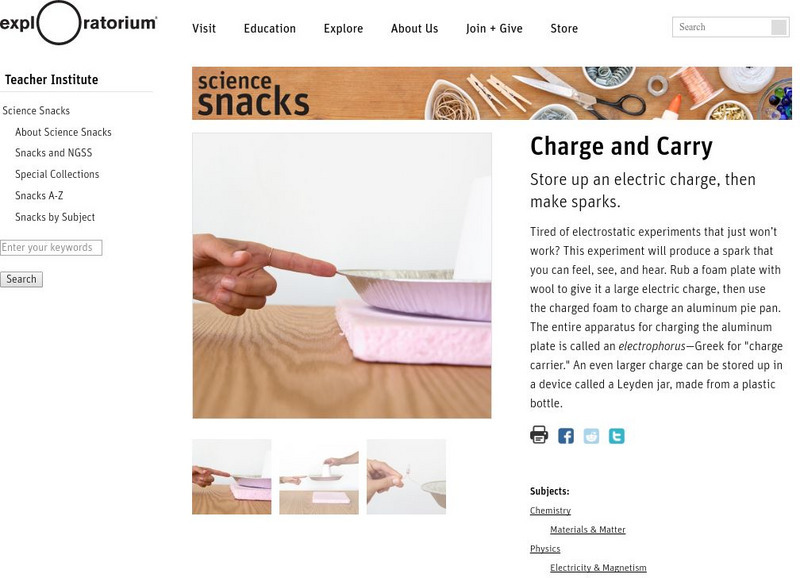American Association of Physics Teachers
Com Padre Digital Library: Open Source Physics: Point Charge Forces in 1 D Model
Virtual simulation investigating the electric force that one charged particle exerts on another. Plot a graph of the electric force as a function of position.
American Association of Physics Teachers
Com Padre Digital Library: Open Source Physics: Point Charge Forces in 2 D Model
In this simulation, examine the electric force that a charged particle gains from nearby charged particles in a two-dimensional state. See the net electric force shown as an arrow attached to the particle.
American Association of Physics Teachers
Com Padre Digital Library: Open Source Physics: Three Point Charges Model
In this simulation, investigate the force between charged objects. Rank three charged objects of different magnitudes, then create a method to determine the ranking of the charge magnitudes. Finally, devise a new method of determining...
American Association of Physics Teachers
Com Padre Digital Library: Open Source Physics: Electric Multipole Field Model
Simulation demonstrating how a point charge, a dipole, or a quadrupole shows field vectors or voltage. Change the charge and see the electric field direction and magnitude, and then record the detector values using a built-in data...
American Association of Physics Teachers
Com Padre Digital Library: Open Source Physics: Point Charge Electric Field
Investigate with the electric field around one or two charged particles at different points along a line in this physics simulation.
Wikimedia
Wikipedia: Charles Augustin De Coulomb
Spanish-language site lets students discover the life and work of this physicist and engineer, who is known for his studies of electric charges.
Michigan State University
Michigan State University: Physics: Coulomb's Law
Here is a presentation of Coulomb's Law and the electric field potential formula, with example problems.
University of St. Andrews (UK)
University of St. Andrews: Physics and Astronomy: Electric Potential and Charge
From The Scots Guide to Electronics web site. The meaning of electric potential is described. A combination of diagrams and words are used to explain this difficult concept without the use of mathematics. Very well done!
National High Magnetic Field Laboratory
Magnet Academy: Van De Graaff Generator
Invented around 1930, the Van de Graaff generator is a popular tool for teaching the principles of electrostatics. Others just call it "that thing that makes your hair stand on end." See how it works here.
Exploratorium
Exploratorium: Science Snacks: Flying Tinsel
Can you make tinsel fly? In this activity, experiment with positive and negative charges to suspend tinsel into the air!
Other
Science Hobbyist: Sticky Electrostatics
A series of activities focusing on charge interactions, charging methods, and the conservation of charge. Activities utilize scotch tape and other readily available items. Includes explanations of what is happening.
Physics4kids
Physics4 kids.com: Charge It Up
Discover the science behind electrical charges. This brief overview describes changes in atoms that lead to the formation of electricity. Explanations are also provided for the topics of electrostatics and electric forces. The whole...
Exploratorium
Exploratorium: Science Snacks: Electrical Fleas
Create your own "flea" circus in this activity by using the effects of static electricity. Students will observe a charged object attraction to the opposite charge causing the object to jump.
Physics Classroom
The Physics Classroom: Electrostatics: Lesson 4: Electric Field Intensity
A lesson enhancing students understanding of electrostatics. Recognize electric fields and know the strengths they can have. Identify the formula to determine the strength of those fields. Check out the interactive featured in the...
Other
Brockport High School Science Department: Coulomb's Law
A complete lab where a student verifies the force versus distance relationship of Coulomb's Law.
CK-12 Foundation
Ck 12: Physics Simulation: Touch Screen
[Free Registration/Login Required] Learn about how capacitances add up in series and parallel by exploring the physics behind a touch-screen device using this interactive simulation. A PDF worksheet and a video tutorial are also...
CK-12 Foundation
Ck 12: Physics: Electrostatics Study Guide
Review your understanding of Electrostatics with this easy-to-read study guide.
MadSci Network
Mad Scientist Network: Building a Wimshurst Machine
Using a question and answer format, this page is a response to a question on how to build and use a Wimshurst machine. Directions and suggestions for building such a device are given. The principle of electrostatic induction which...
Cosmo Learning
Cosmo Learning: Physics Ii: Electricity and Magnetism
A collection of video lectures from a fundamentals of physics course taught at Massachusetts Institute of Technology. The course is the second in the sequence and focuses on electricity and magnetism The videos feature topics on...
University of California
University of California Berkeley: Charging an Electroscope by Induction
From the U.C. Berkeley Physics Lecture Demonstrations website. A thorough description of an activity in which a charged metal plate is used to charge an electroscope by induction. Complete directions and a diagram of the equipment and...
Learn AP Physics
Learn Ap Physics: Physics B: Electrostatics
A site dedicated to help students prepare for the AP Physics B test. This specific site reviews electrostatics including electric charges, Coulomb's law, static electricity, electric fields, electric potential, and electrostatic...
Physics Classroom
The Physics Classroom: Static Electricity Review
This review from the Glenbrook South High School provides a series of questions on various topics associated with static electricity (such as electrical insulation). Answers and explanations are hidden, yet easily accessed from within a...
Other
Science Hobbyist: Capacitors Do Not Store Charge
A page which clarifies many static electricity misconceptions, including how a capacitor charges.
Exploratorium
Exploratorium: Science Snacks: Charge and Carry
This site from The Exploratorium Museum is a full description of a short activity. An electrophorus plate and a Leyden jar are made. The electrophorus is charged by induction. Its charge is transferred to the Leyden jar by conduction...



